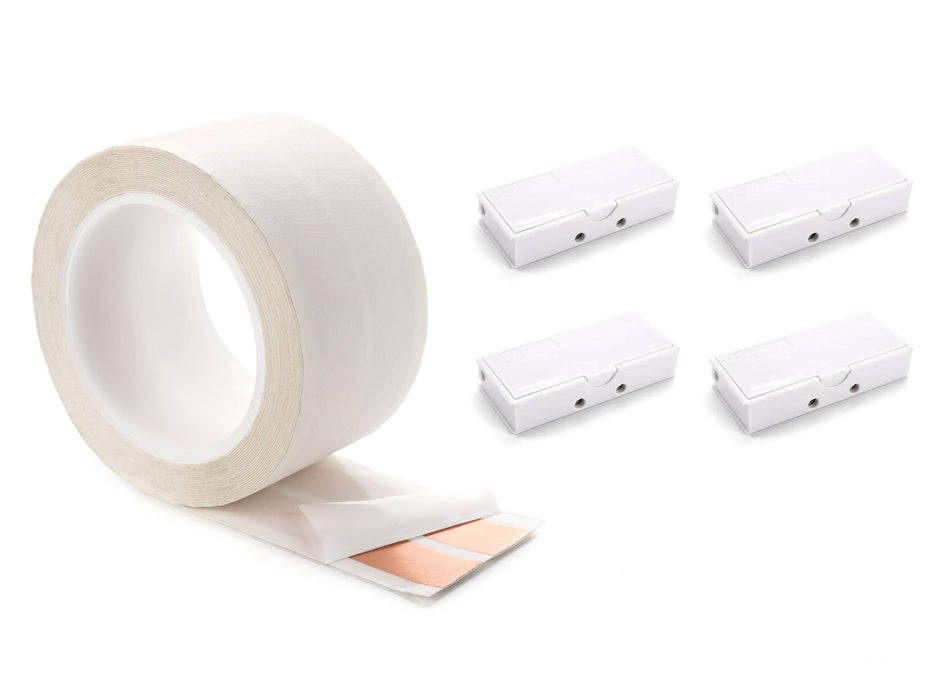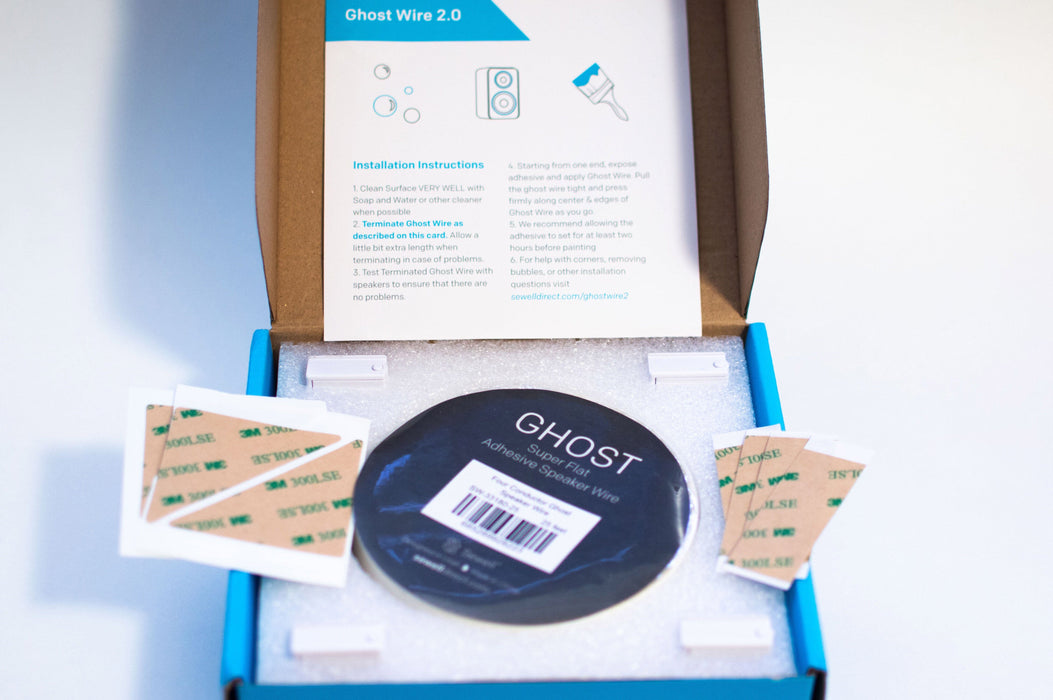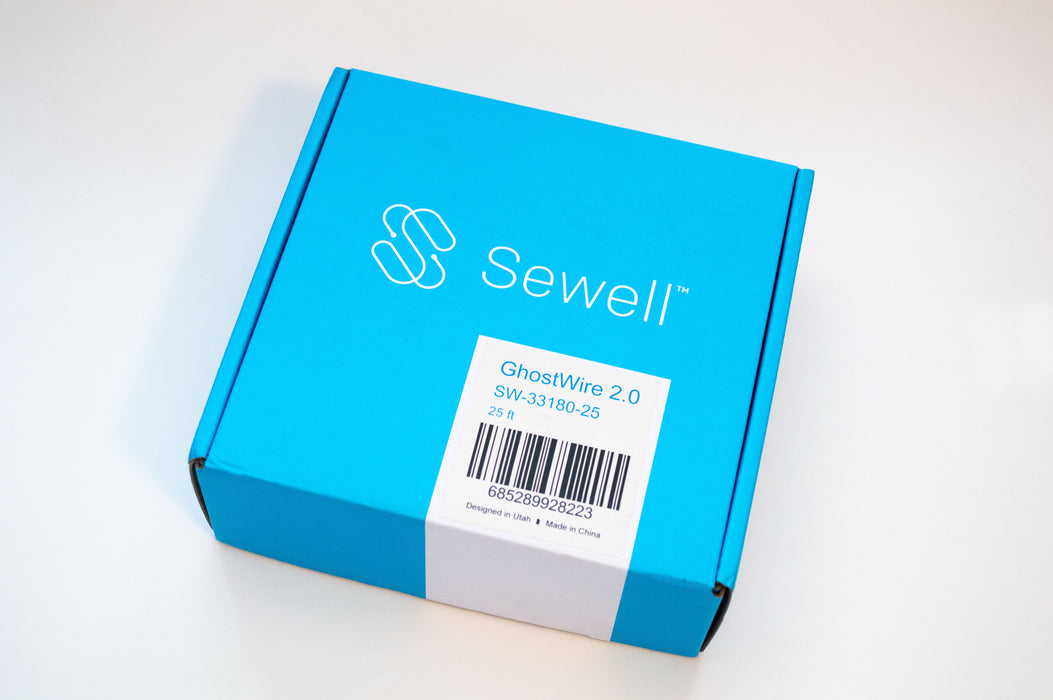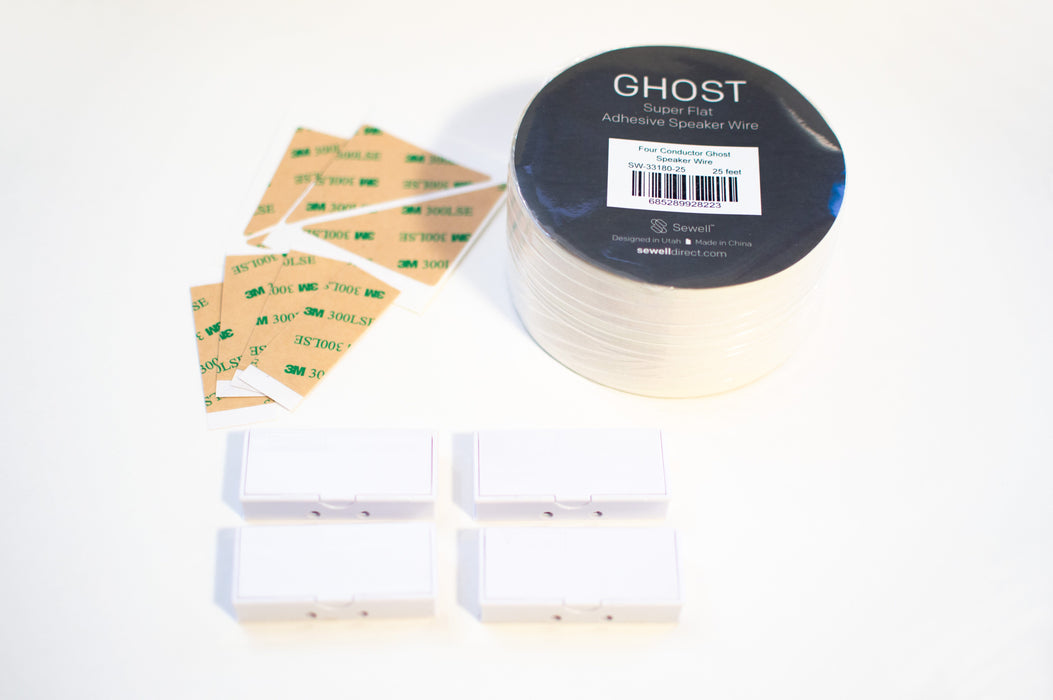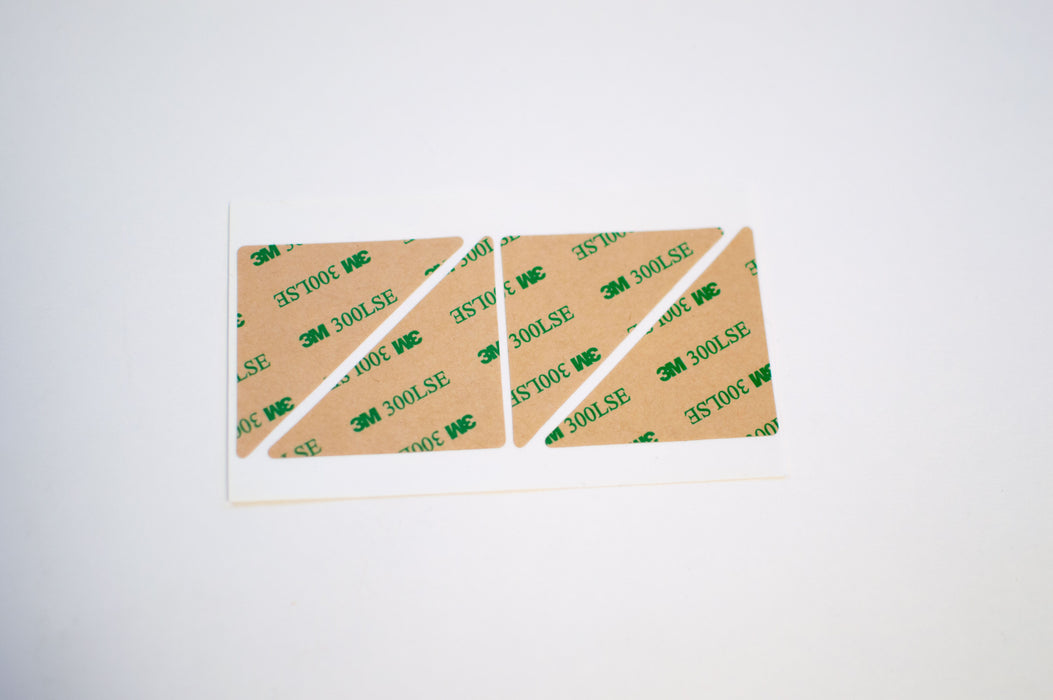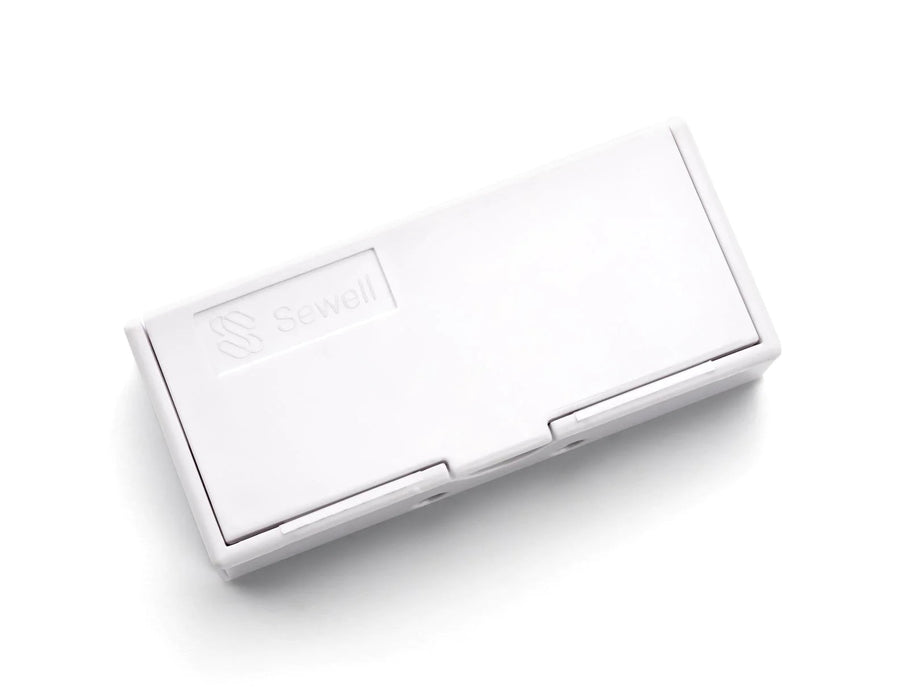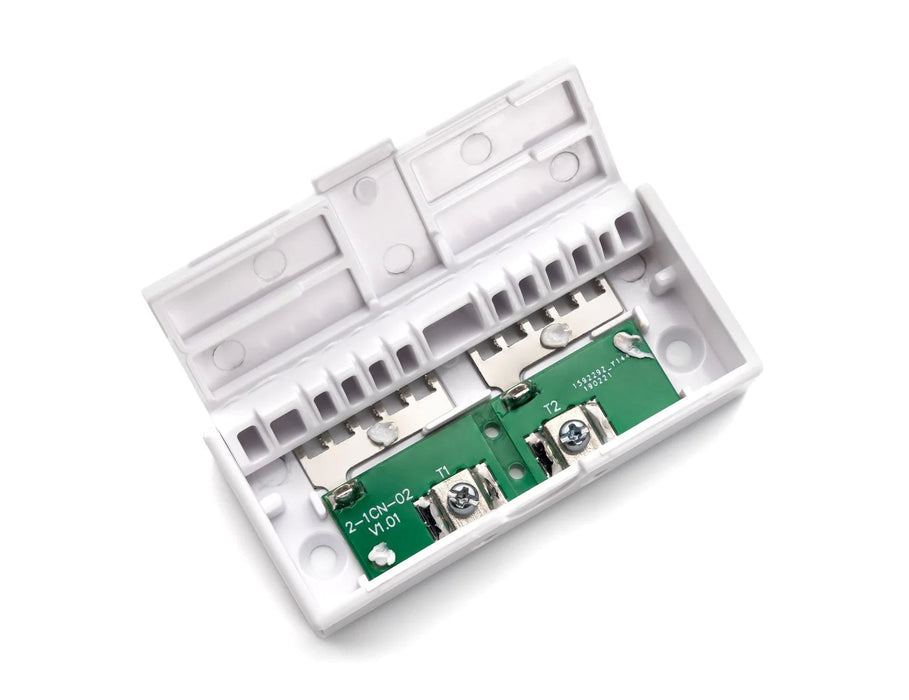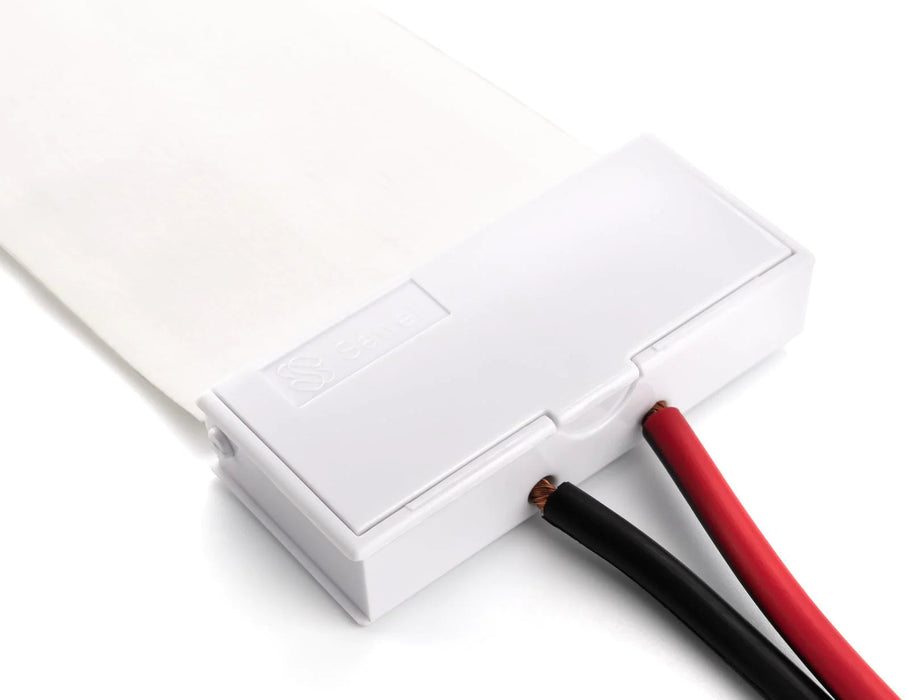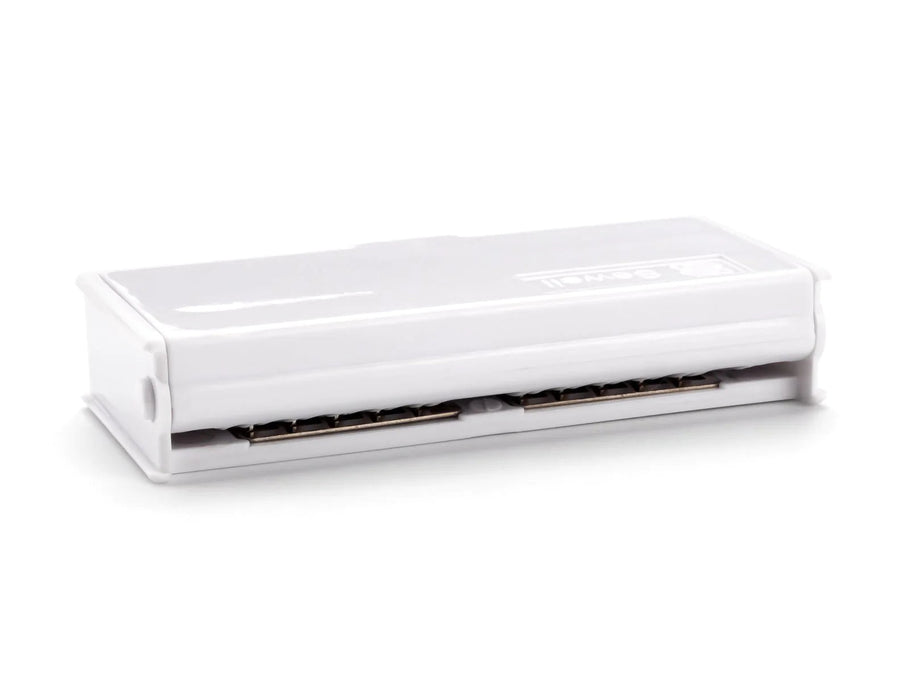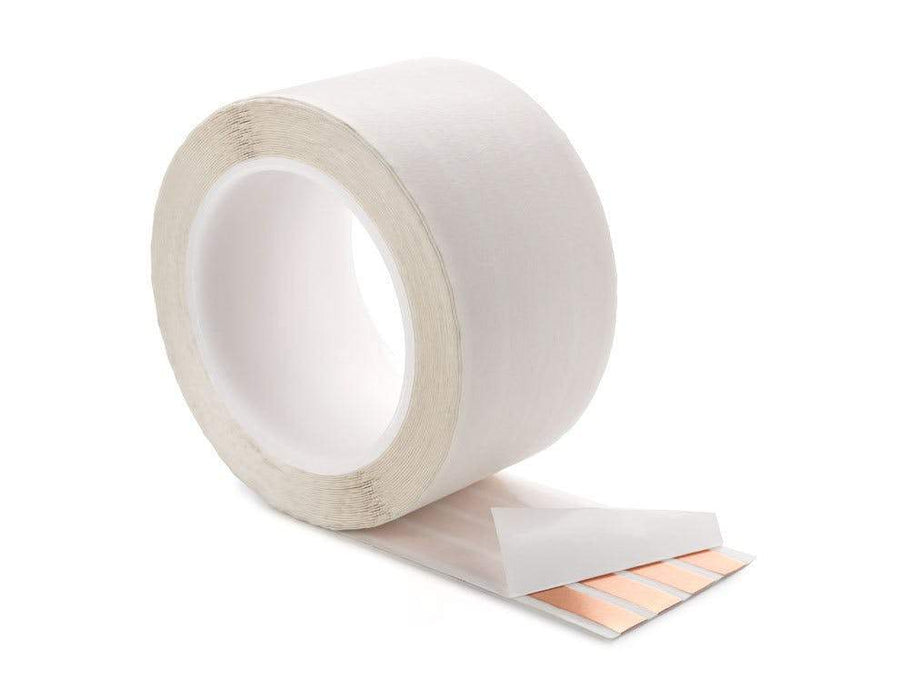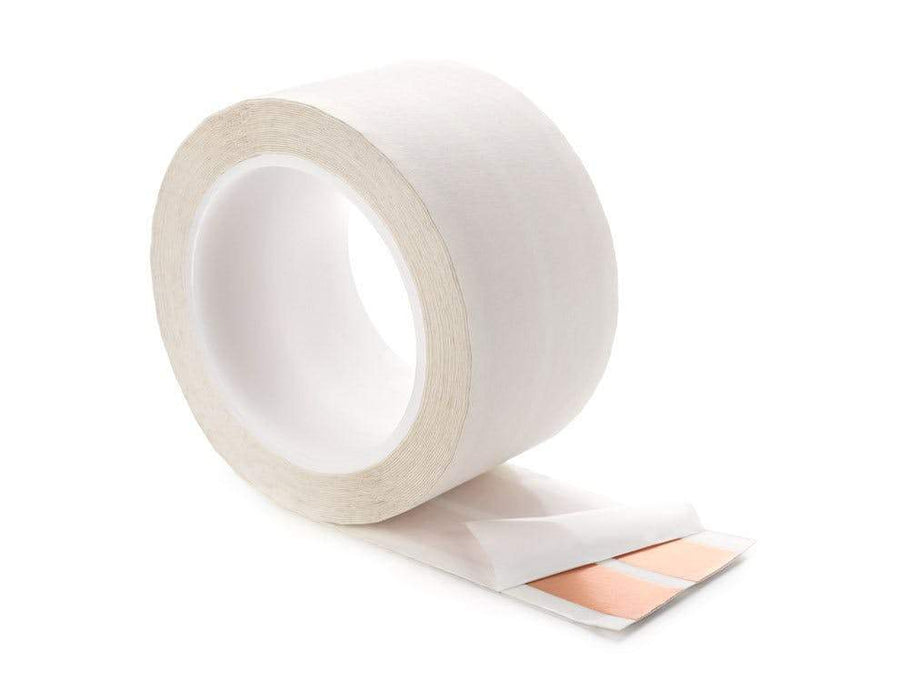

Make speaker wires disappear right on the wall or under the carpet with Sewell Ghost Wire. This super-flat speaker wire can be used on almost any flat surface.
Perfect for running stereo signals across rooms, around corners, in automobiles, under flooring, or any situation where wires cannot be run through walls.
White backing allows wires to be simply attached and left uncovered, or it can be easily covered with paint, spackle, or flooring making the wire virtually invisible.

For an even cleaner install, we recommend using the Ghost Wire Terminal Block to connect the Ghost Wire to your regular speaker wire.
Tutorials
How to Terminate Ghost Wire
- Peel back the white backing about 1” and cut it off, exposing the adhesive and conductors.
- Trim away white covering in between and at the edges of the conductors.
- Remove the white covering from the opposite side of the conductor. It does not have adhesive between the conductor, and should leave a nice clean copper surface when removed.
- Fold over the conductor so that only the clean copper side is exposed.
- Insert your standard speaker cable in round holes a one side of the terminal block and tighten the set screw.
- Insert the conductors into the Terminal Block and close the cover so that the teeth will penetrate the copper.
Specifications
How to Remove Bubbles from Ghost Wire
- Install the ghost wire onto a clean surface, pulling it tight as you do.
- Use a heat gun on low or hair dryer on high to heat the area where bubbles appear
- Smooth out the bubbles by rubbing back and forth over them. Use a glove if the heat is uncomfortable.
Running Ghost Wire Around Corners
We’ve had a lot of people ask us how to make 90° turns when running it along the floor.
Here’s how:
- Run the cable along the edge of the wall with the adhesive side facing down
- Fold the cable back so the copper strips are facing up
- Fold the cable back down at a 45° angle, making a 90° turn

Specifications
Mfg. Part Number
- SW-32985-25 25 ft. 2 Conductor
- SW-32985-50 50 ft. 2 Conductor
- SW-32985-100 100 ft. 2 Conductor
- SW-32986-25 25 ft. 4 Conductor
- SW-32986-50 50 ft. 4 Conductor
- SW-32986-100 100 ft. 4 Conductor
Brand
- Ghost Wire™ by Sewell
Specifications
- 2 Conductor Thickness: 0.5mm (0.02 inches) (includes peel back layer, adhesive, and conductors)
- 2 Conductor Total Width: 60mm (2.35 inches)
- 2 Conductor Conductor Width: 20mm (0.79 inches)
- 4 Conductor Thickness: 0.65mm (0.026 inches) (includes peel back layer, adhesive, and conductors)
- 4 Conductor Total Width: 60-61mm (2.4 inches)
-
4 Conductor Conductor Width: 11mm (.44 inches.375" Width (each conductor)
- 16 AWG (2 conductor)
- 18 AWG (4 conductor)
- Pure Copper
- 2 Conductor or 4 Conductor
- White Jacket
- Rated up to 10 Amps
- Indoor Use
Applications
- Home Theater Surround Sound Speaker Wiring
- Low Voltage Stage Lighting
- 12 Volt Cabinet Lighting
- Security Access Control Wiring
I used this product to provide 5 volts to power LED lighting for two pictures. Once it was painted it essentially disappeared. You really have to study it to see it. Before I just had an ugly wire to power the LED that I painted, but this is far and away better. And when I paint the whole wall, I'll be sure to feather the wire edges so it truly be invisible.
We are having Harwood flooring installed in our new home and I want to be prepared when my wonderful wife decides she wants to move the furniture. Since I purchased our home theater system before they had bluetooth speakers, I needed to find a way to hide the speaker wires without causing a tripping hazard. The contractor will be pulling up the old carpet next week and I will be there to prep and lay down the flat speaker wire for multiple speaker locations. So when we move the furniture around, the speaker wire will be waiting!!! Thank you!!! Very clean look and easy to work with. I will opt to mount the connectors to the wall to ensure stability over time.
Worked as designed and very easy to setup
Wishing it was actually white, not “masking tape off-white”. Also, possibly a gauge or actual measurement of what to trim off.
Highly recommended if you can’t drill. Easy install. Kind of challenging to cut around the wire termination area but it’s worth it.
